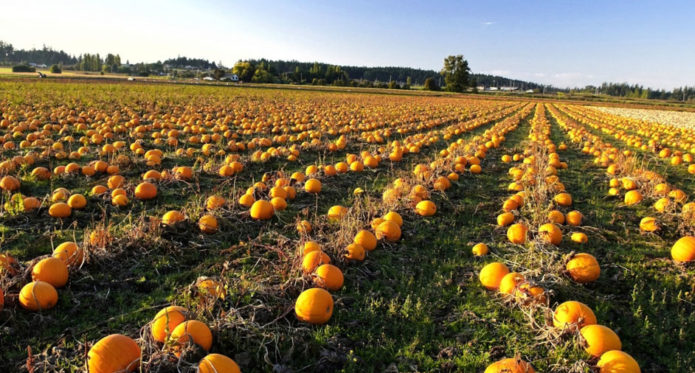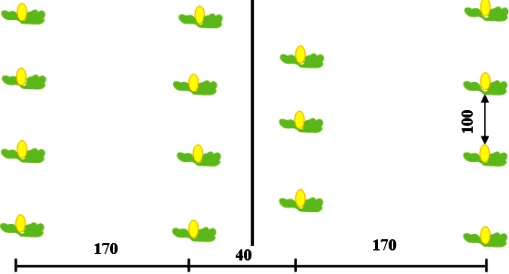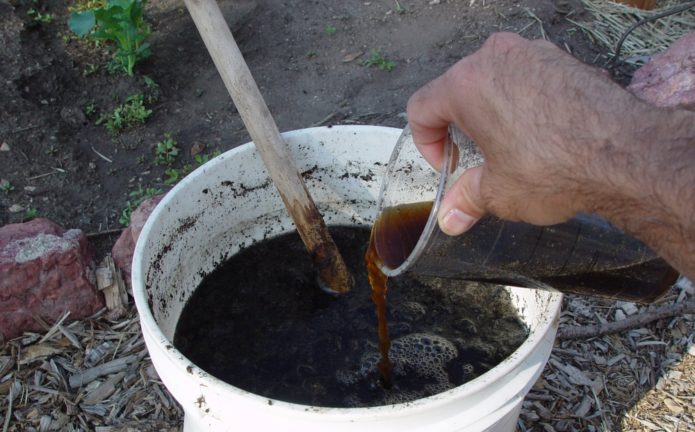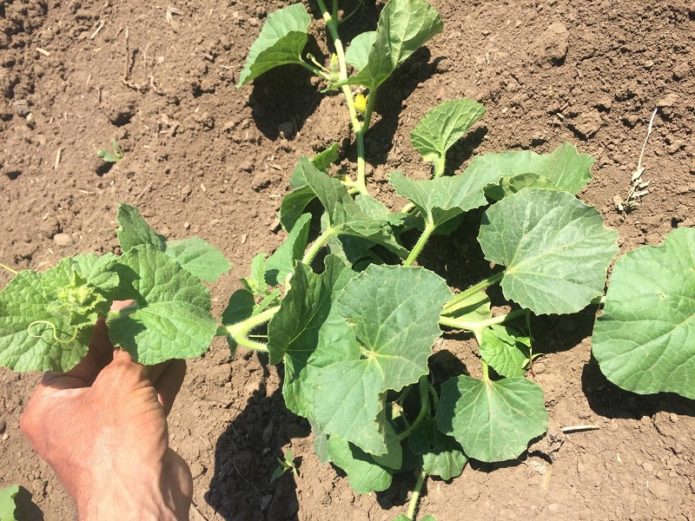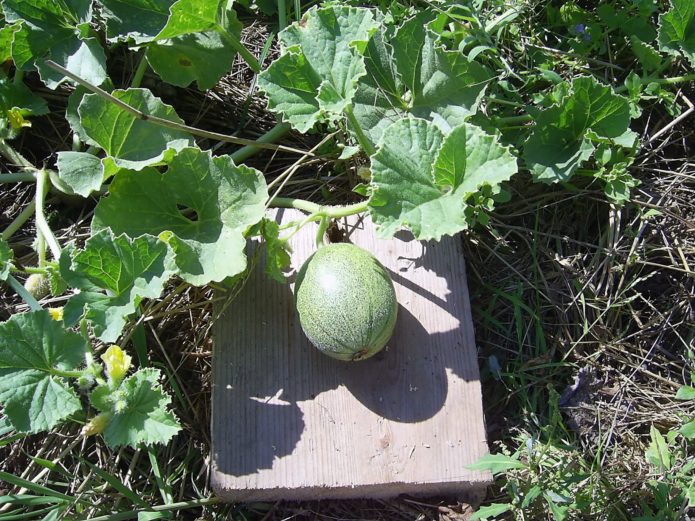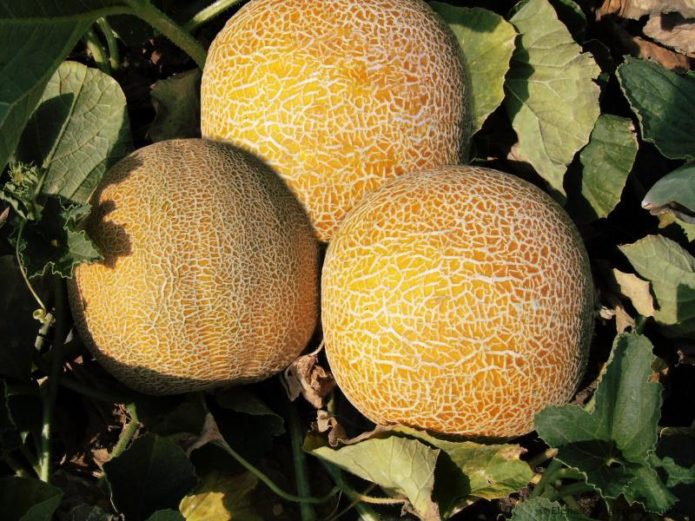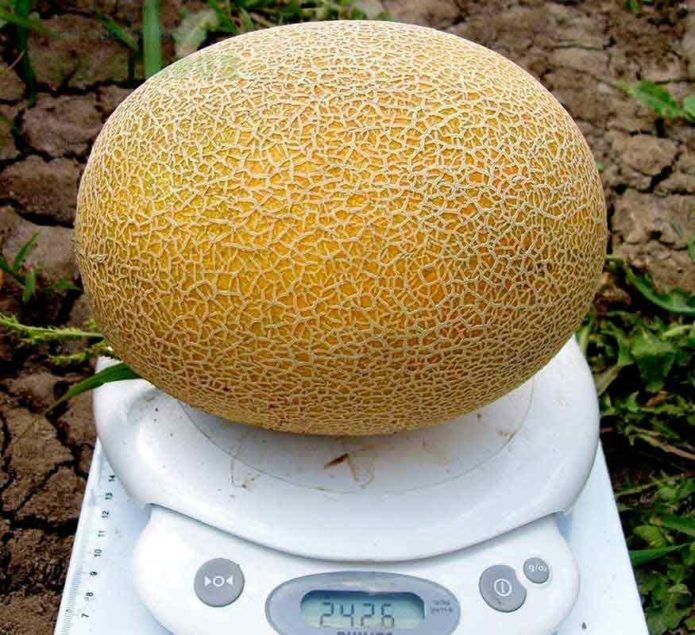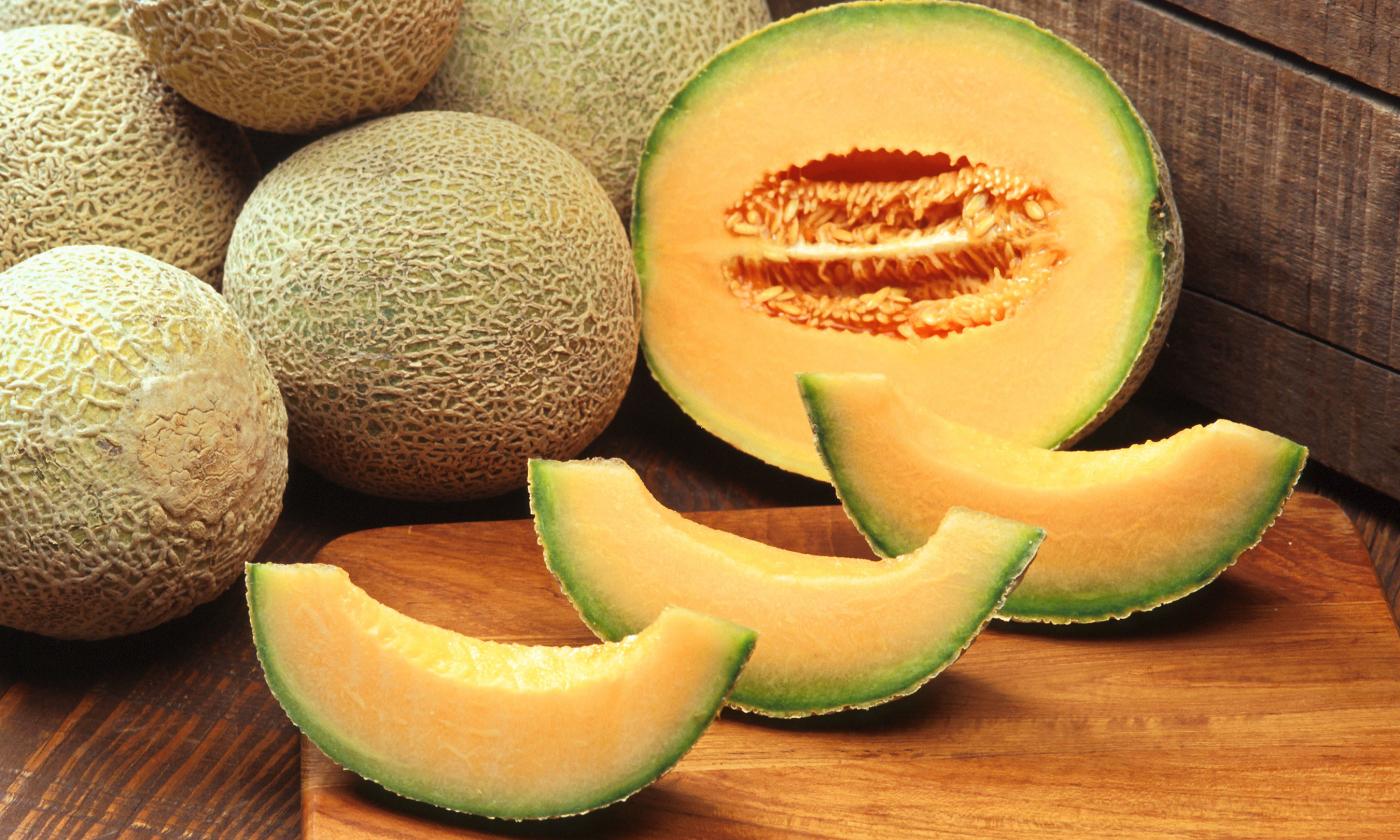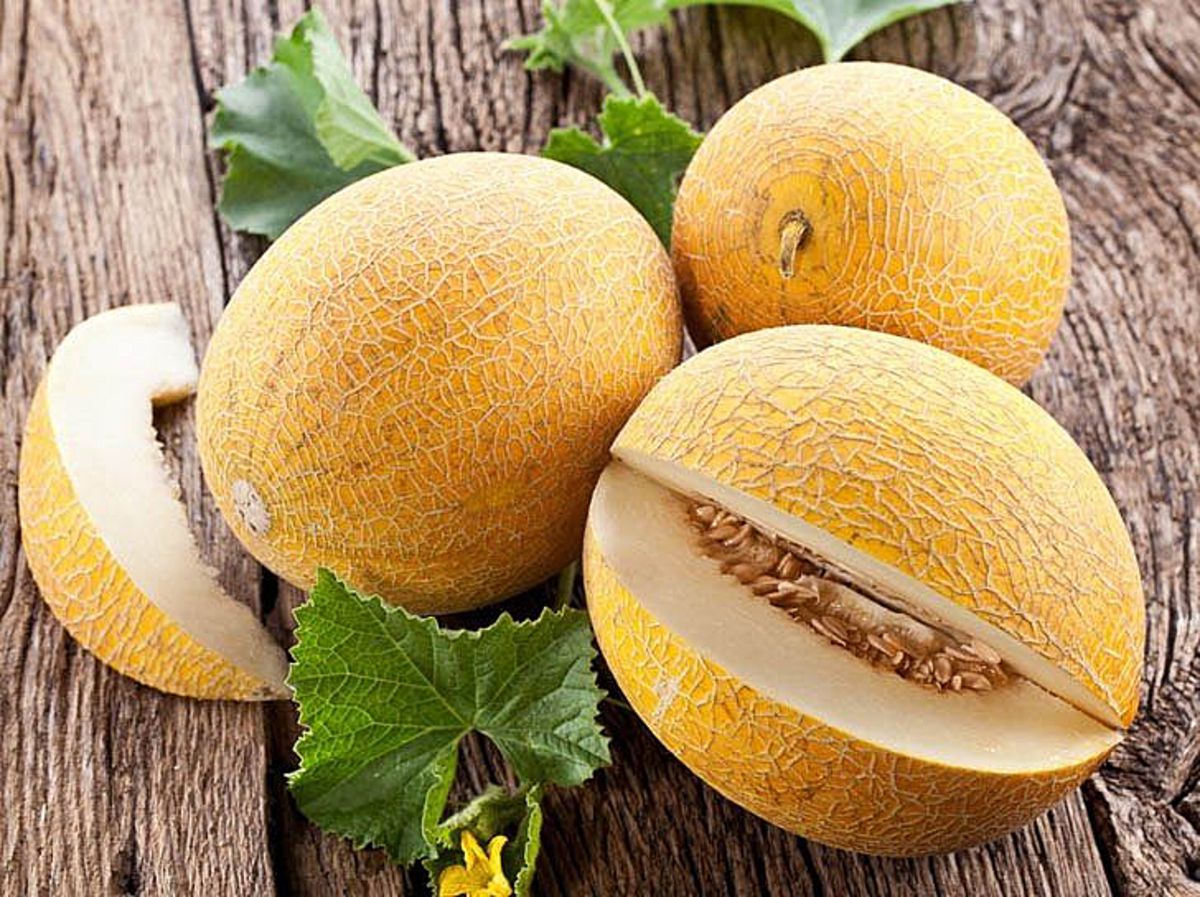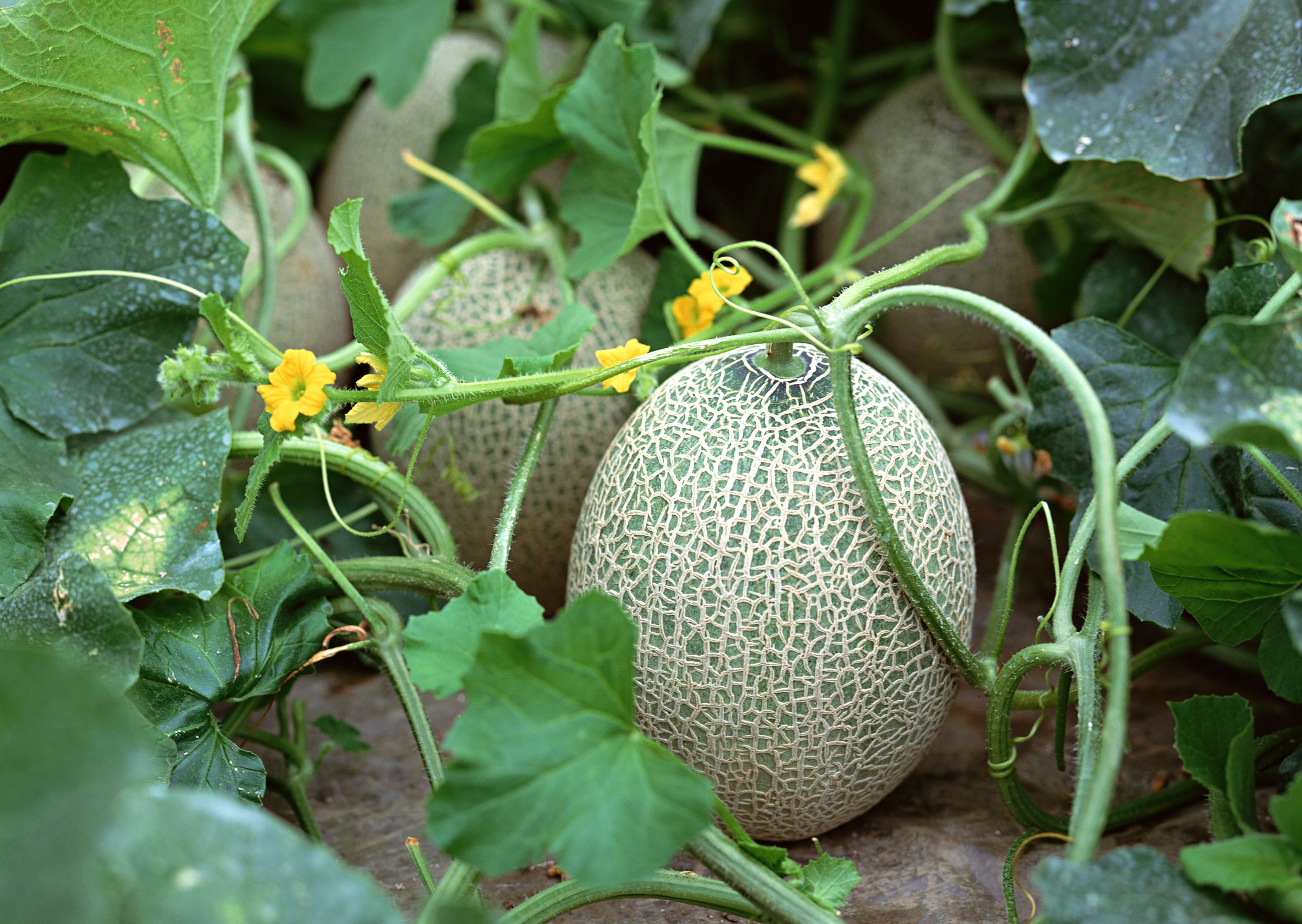Melon, of course, is familiar to us as a southern delicacy, but it has long been walking along melons and amateur gardens to the north. Sometimes it is grown in a greenhouse, but it is a pity to take up precious space for it, and first of all they try to grow it in the open field, especially since the melon, of course, is tastier under the sun's rays.
Content
In what climatic conditions can melon be grown in the open field
If desired and skillful, the melon can be grown in the north, although climatic conditions that are optimal for it exist at latitudes approximately south of Volgograd. It is Central Asian melons that are considered the most delicious: they grow in hot climates under the scorching sun. They need dry air, and there is no need for excess moisture in the soil: the powerful roots of the plant themselves extract it as much as it needs. Drought is not terrible for her, and humidity above 70% is already very undesirable.
To obtain truly sweet fruits, a melon needs a sum of active temperatures of at least 2500 aboutC for the growing season, and even more for late-ripening varieties. Starting from middle latitude, this value is not gained in every season, so you have to be cunning: first, plant melons under temporary shelters, and sometimes cover plants in summer too.
The trouble is that it is required to plant the melon as early as possible: from the June sowing, there are no normal fruits, even in early-maturing varieties.
Thus, in theory, melon can be grown almost everywhere, but in reality in many localities it takes a lot of work. The use of greenhouses is justified only as a last resort: the walls of even the most modern greenhouses extinguish a fair amount of ultraviolet radiation, which prevents the normal growth and full ripening of melons. In addition, melons need space: the seemingly small size of the plant is deceiving, the roots of the melon spread far, and thickening sharply worsens the growth conditions of this culture.
It is known that in the Moscow region melons were grown several centuries ago, but they were planted in warm greenhouses.
"Smart beds" are still used now, using large amounts of organic matter to heat them, black plastic film, which is kept in the garden all summer and in the slot of which melons are planted, as well as modern covering materials.
How to plant a melon in unprotected ground
Melon cultivation requires the most illuminated area, preferably a small hill, reliably protected from northern winds.
What should be the soil
Melon is quite picky about soils. They should be light and neutral, preferably loamy. Acidic soils are necessarily lime, and clay soils are corrected by adding sand and peat.They try to plant this crop after onions, garlic, cabbage or peas, but not after nightshades or melons. At the same time, it is permissible to plant a melon in one place for 2-3 years in a row, but not more.
The garden bed is prepared in advance, preferably in the fall. However, there is a time for this in spring. The site is dug deeply, making 1 m2 a bucket of humus or compost. Shortly before planting, walking along the bed with a rake, add 30-40 g of superphosphate and a handful of wood ash. In many regions, soon after the snow, the bed is covered with a film so that the ground warms up sooner.
When to plant melon
Melon planting dates depend on the climate of the region. Melon is planted not only with seedlings, but also directly with seeds; these times are also slightly different. However, sowing seeds in a garden bed is used only in the southern regions.
Planting of seedlings is carried out only when the temperature during the day is 15-20 aboutC, and at night - above 6 aboutFROM. In the Central region, this occurs in the first days of summer, in more northern areas - 10-15 days later, and in the south, possibly even in April. However, you always need to be able to insure against cold snaps and cover the plants with spunbond, and sometimes with more serious insulation.
Sowing seeds directly into the garden is carried out about a week earlier, but cover the crops with foil. While the seeds hatch and sprout, it will have time to warm even more.
Landing scheme
Melons are not planted densely. First, the roots require a large feeding area. Secondly, they need to be looked after, including systematically pinching the whips, and for this you have to walk between the bushes. Among all kinds of schemes, the most often used one is when in a row between plants the distance is at least 70 cm, and between rows - at least 90 cm.Sometimes melons are planted as if on a flower bed: in the center of a circle with a diameter of 1.5 m, one plant, and at the edges - 5-6 more copies.
Landing technique
Planting melons directly from seeds is no different from sowing most vegetable crops. In the selected places, holes are made up to 5 cm deep, a handful of ash and a pinch of urea are added to each, mixed, gently watered. Place 2-3 seeds in a hole (if the seeds are in short supply, then one at a time) and sprinkle them with a layer of soil about 3 cm. Cover the bed with a film, then replace it with spunbond. If stable heat is present, no shelter is required.
Video: sowing melon seeds
Melon seedlings are grown exclusively in individual pots, preferably peat pots. Growing seedlings is done in much the same way as for cucumbers or zucchini. They are transferred to the garden bed at the age of one month, with 4-6 true leaves. The landing is also carried out in the traditional way, but without deepening. Melon should grow at the same depth as it is used to in apartment conditions. After watering with warm water, which should not lead to deepening of the seedlings, the soil is sprinkled with a thin layer of dry sand.
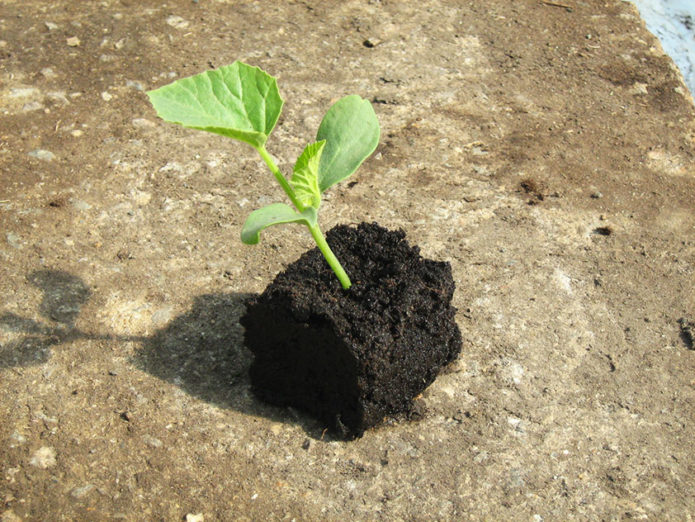
If it's time to plant seedlings, and there are still few leaves, it's not scary: if only the roots were intact
Outdoor Melon Care
Melon care is similar to many heat-loving vegetables such as cucumbers. True, a melon under the sun is very rarely grown in a vertical culture: the lashes are allowed to creep along the ground, but their condition is systematically monitored.
Watering
Melon is rarely watered; however, in the absence of rain, it has to be done weekly up to fruit setting. When fruits appear, watering is significantly reduced, carrying them out only in case of severe drought, and then, when the fruits grow from a fist, watering is stopped. Pour water heated by the sun and only at the root: sprinkling melon does not welcome.
Until the bushes grow and do not interfere with care, the soil is shallowly loosened after watering. Weeds are destroyed at the same time. With the beginning of the growth of lateral shoots, the plants spud a little.
Top dressing
During the growing season, melons are fed three or four times.The first time is 10–15 days after planting seedlings in the garden bed (or 15–20 days after the emergence of seedlings when sowing with seeds), the second - when the first flowers are blooming, then when the fruits reach the size of a chicken egg. A lot of fertilizer is not required: the melon can find nutrients, as well as moisture, on its own. But if only one fruit grows on the bush, and the rest remain small, additional feeding will be required.
Usually they try not to use mineral fertilizers and get by with infusions of mullein or bird droppings with the addition of wood ash. When mineral fertilizers are used, melons grow larger, but not very sweet. However, foliar top dressing (spraying the leaves) with complex fertilizers is possible. Any top dressing must be applied to wet soil, trying to pour the solution under the root. After feeding, weak loosening of the soil is useful.
Pinching a melon in the open field
In the open field, you need to throw all the strength of the melon on the growth and ripening of fruits, and not on useless greens. Melon bushes necessarily form. However, the formation consists mainly in the timely pinching of certain shoots. This is not difficult to do, but you need to clearly know what kind of melon is planted: a variety or a hybrid. In both cases, the principles of pinching shoots differ.
So, varietal melons bear fruit mainly on lateral stems, so they try to develop them. The main stem is pinched shortly after planting the melon in the garden, as soon as it is comfortable. This is done over the fifth or sixth leaf, the procedure causes the appearance and growth of lateral shoots, on which mainly female flowers appear, and then fruits. However, many shoots in the open field cannot be left: all the same, the bush will not feed the entire crop. When it becomes clear which of the shoots are the strongest, only two of them are left (rarely three). The rest ruthlessly cut out, and then weekly inspect the bush and, when new stepsons appear, break them out.
In the case of melon hybrids the opposite is true. Almost all modern hybrids bear fruit mainly on the central stem, so they pinch all the lateral processes. They cannot be cut out at all, the leaves on them will take part in photosynthesis, but each side lash is pinched over the second or third leaf.
The formation of the bush does not end there. The fact is that there are a lot of flowers on a melon, and ovaries can appear from most of them. But even in the best conditions, the melon bush will not provide the growth of more than six fruits (and in the case of large-fruited varieties and hybrids - only three or four). Therefore, after the appearance of the ovaries, all the flowers that appear are immediately cut off. Then they look at the ovaries for some time and when it becomes clear which of them are lagging behind in development, they are also removed.
It is best to pinch new shoots weekly. As the leaves age, they are gradually torn off, starting with drying up and yellowing. Since melons are usually grown in unprotected soil in a horizontal culture, the fruits lie directly on the ground. Therefore, when they grow out of the cam, planks are placed under them so that the fruits do not rot, lying on damp ground, and are not attacked by slugs.
Melon diseases and pests
Most often, there are no problems with the cultivation of modern varieties in terms of diseases: most of them have good immunity. Melons sometimes develop diseases such as powdery mildew, olive spot and anthracnose. All diseases are most often found in the case of high humidity and improper care (especially when they do not fight weeds and do not remove various plant residues). Most diseases are treated with Bordeaux liquid and preparations based on colloidal sulfur.
The most dangerous pests are spider mites and melon aphids. Both feed on juices from the leaves, greatly weakening the plants. Both he and the other settle, first of all, on unkempt, overgrown with weeds. You can fight a small number of pests with folk remedies (ash and soap solution, infusion of onion peels, etc.). If there are a lot of pests, the treatment of plantings with Karbofos can help, and if they are massively spread, you will have to use powerful insecticides (against aphids) and acaricides (against ticks).
Do not forget about large pests - birds. Crows love ripe melons and peck them mercilessly. It is difficult to deal with these smart birds, so the crop must be harvested on time.
Features of melon cultivation in different regions
The main difference in the conditions of the regions, affecting the peculiarities of melon agricultural technology, is the number of warm days. It is most difficult to grow this crop in Siberia and in the north; in other regions, gardeners somehow adapt.
Middle lane
In central Russia, not very many varieties of melons are cultivated, often giving preference to Altai and Kolkhoznitsa. Sowing seeds in the garden is rarely used, the cultivation of seedlings begins at the end of April. A month later, the seedlings are transferred under light shelters, removing them after a couple of weeks. The success of the cultivation depends on how the summer turned out. In another year, melons may not start at all, but often get quite decent yields. With the advent of new varieties of melons, they began to plant not only in the south of the region (Bryansk or Kaluga regions), but also to the north.
Moscow suburbs
The Moscow region is located in the middle lane, but it has a certain specific climate. However, it often affects only fruit trees, which can suffer from frequent thaws in winter, this does not apply to melon. But in the Moscow region, many areas can be flooded in case of prolonged rains, which is why the roots of melons suffer, melons can die. Therefore, here they always try to plant them on the hills, and always using seedlings. Smart beds are also often used.
Video: growing melon in the suburbs
Black earth
In the Chernozem region, sowing seeds into the ground is quite possible, they do it when the soil warms up to 12-13 aboutC. For protection from cold winds, plants are immediately planted - corn or sunflower. The assortment of varieties is somewhat different from the middle lane: they prefer not only the Kolkhoz woman, but also Yantarnaya, Kazachka, Zolotistaya. Sometimes they plant a melon in unusable buckets: the ground in them warms up well, and in case of cold snaps, the buckets are easy to hide in the room.
Ural region
In a very short summer, melons do not always have time to ripen. Therefore, the choice of varieties is very limited (the Dream of Sybarite and Cinderella are traditional), and cultivation is often carried out in a greenhouse: the bush itself is planted in a shelter, and the whips are eventually released outside. Planting seedlings in a garden bed before mid-June is impossible, and even then it is first covered with spunbond or cut-off bottles.
Harvesting time
Melons of various varieties are ready for harvest 45–90 days after planting. Depending on the planting time, variety and climate of the region, this can be July, August, and September. Only completely ripe fruits should be collected: unripe melon does not reach during storage; only if she has only a few days left, she can become a little more ripe in a warm place.
To accelerate ripening in the garden, the fruits can sometimes be turned with different sides to the sun.
It is not difficult to determine the ripeness of a melon: they should turn into a color characteristic of the variety, become slightly soft from the end opposite to the stalk, and the vast majority of early and mid-season varieties also acquire a pleasant smell. Overripe melon becomes less tasty, and can burst in the garden.
Reviews
In the Altai Territory, which is not far from Omsk, sprouted seeds are planted in the ground, excellent melons grow.
I have been growing melons for 6 years.Varieties for the Moscow region (middle lane) should be chosen early, but also for seedlings in April. (Some varieties are better at the beginning, others at the end.) In the garden, try to create conditions for maximum warmth and light. For example, in a sunny place, in advance, a week before planting, cover the ground with black lutrasil; later, during cultivation, keep the film always closed on arcs from the north side - open only from the south. But even with all the efforts, the yield fluctuates depending on what kind of summer is. The most successful varieties are those with small fruits. After the fourth true leaf, the stem is pinched, because the fruits are tied better on the lateral stems.
If there is manure, make a warm bed. Down the manure is fresh, and from above see 25 land. Just be sure to pinch the bushes over 3 - 5 leaves for the formation of second-order shoots.
Last year I planted Caramel and Honey Tale, for seedlings in early May, in early June, melons had time to ripen, not honey, of course, but quite sweet, nevertheless, I somehow lacked the richness of taste, or something, while I think is it worth planting this year.
The middle lane and Siberia are completely different growing conditions, so it is wrong to generalize them. It is also incorrect to contrast melons of early, middle, late ripening. They just complement each other. The main thing is that they have time to ripen and be tasty, give a good harvest and do not get sick in a particular region.
Last year, the Kolkhoz woman grew melon on her plot - the harvest was excellent, just like from the south, if you remember the summer last year was very hot. And this year there is also a harvest, but the melons are very small and they are not ripe, I thought they would ripen by autumn, but the tops of them all dried up.
Melon "Altai" - very early, ripens when sown with seeds, very aromatic, but unfortunately not sweet, very small percentage of sugars in it. Gold of the Scythians - the average ripening period, I do not have time to ripen, north-west of the Perm region.
Growing a melon outdoors is easy, as long as the weather permits: this culture loves warmth, dryness and light. She also loves space, which should be taken into account if you want to plant this wonderful culture.
